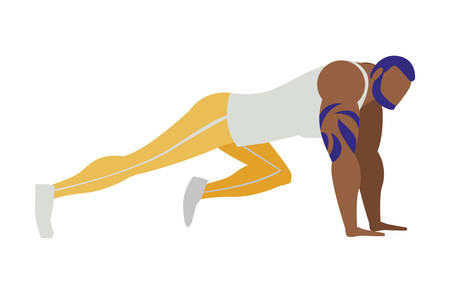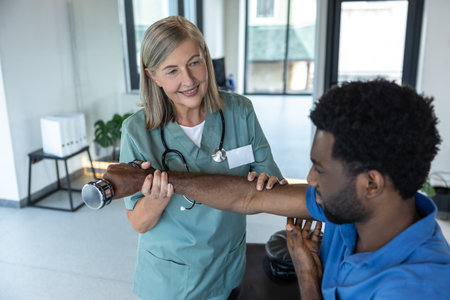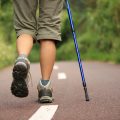Introduction to Knee Replacement Rehabilitation
Knee replacement surgery, also known as knee arthroplasty, is a common procedure in the United Kingdom, particularly among individuals experiencing severe osteoarthritis or joint damage. The primary goal of this surgery is to relieve pain and restore function to the affected knee, enabling patients to return to their everyday activities. However, the success of knee replacement goes far beyond the operating theatre; effective rehabilitation is crucial for achieving optimal outcomes. In the UK healthcare context, physiotherapists play a fundamental role in guiding patients through their recovery journey. Their expertise ensures that rehabilitation programmes are tailored to individual needs, promoting safe and steady progress. This introductory section provides an overview of knee replacement surgery and highlights the essential contribution of structured rehabilitation within the NHS and private practice settings across Britain.
2. Essential Early-Stage Rehabilitation Approaches
The first few weeks following knee replacement surgery are crucial for ensuring a smooth recovery and setting the foundation for long-term success. British physiotherapists emphasise a structured approach to managing pain, swelling, and mobility in this early stage. Here, we outline the best practices recommended by leading professionals across the UK.
Pain Management Strategies
Effective pain control is essential to enable patients to participate fully in rehabilitation exercises. British physiotherapists commonly advise a combination of prescribed medication, ice therapy, and gentle movement. Patients are encouraged to communicate openly with their healthcare team about their pain levels to ensure their regimen is tailored appropriately.
Swelling Reduction Techniques
Managing swelling helps prevent stiffness and promotes healing. The following table summarises common recommendations:
| Technique | Description | British Physiotherapist Advice |
|---|---|---|
| Elevation | Keep the operated leg elevated above heart level several times a day. | Use pillows to support the leg; avoid placing them directly under the knee. |
| Cryotherapy | Apply ice packs for 10–20 minutes at regular intervals. | Ensure a cloth barrier between skin and ice; never apply ice directly. |
| Compression | Wear compression stockings as advised by your care team. | Check daily for any signs of pressure or skin irritation. |
Early Mobility Practices
Regaining movement and function is a priority in British rehabilitation protocols. Physiotherapists typically encourage:
- Ankle pumps: Performed frequently throughout the day to promote circulation and reduce clot risk.
- Knee bends (within comfort): Gradually increase range as tolerated, avoiding forcing the joint.
- Walking with aids: Use crutches or frames as instructed, progressing to independent walking under guidance.
Additional Tips from British Physiotherapists
- Pace yourself: Balance activity with rest to avoid overexertion in these initial weeks.
- Adhere to your exercise plan: Complete prescribed home exercises consistently for optimal results.
- Avoid sitting with knees bent for long periods: This can hinder progress in regaining flexibility.
- Stay hydrated and maintain a balanced diet: Good nutrition supports healing and energy levels.
The early weeks after knee replacement demand diligence and patience. By following these evidence-based practices advocated by British physiotherapists, patients can lay the groundwork for a successful rehabilitation journey.

3. Strengthening and Mobility Exercises
Regaining strength and mobility following knee replacement surgery is essential for restoring independence and confidence in daily life. British physiotherapists emphasise a tailored approach, ensuring that rehabilitation exercises are both effective and suitable for the patient’s unique needs and lifestyle. Below, we outline recommended exercises commonly prescribed across the UK, focusing on improving muscle strength, joint flexibility, and overall functional mobility.
Key Strengthening Exercises
Physiotherapists in Britain often begin with gentle strengthening exercises such as quadriceps sets, straight leg raises, and glute bridges. These movements target the muscles surrounding the knee, particularly the quadriceps and hamstrings, which are vital for supporting joint stability. As recovery progresses, patients are guided towards more advanced activities such as mini-squats, step-ups, and the use of resistance bands to further enhance strength.
Improving Flexibility
Maintaining flexibility is just as important as building strength. British physiotherapists typically incorporate stretches like heel slides, calf stretches, and hamstring stretches. These help to prevent stiffness, improve range of motion, and facilitate smoother movement during walking or climbing stairs—key activities in everyday British living, especially where public transport and walking are common.
Building Confidence Through Functional Activities
Confidence in daily tasks is central to successful rehabilitation. To this end, therapists often recommend practising activities such as sitting to standing from a chair, walking on different surfaces, and gradually increasing outdoor walking distances. For many UK patients, safely navigating public spaces, using buses or trains, and managing steps at home are important goals. By focusing on practical skills within the context of local environments, physiotherapists ensure that rehabilitation prepares patients for real-world challenges.
The Role of Personalisation in Exercise Programmes
No two recoveries are identical; thus, British physiotherapists tailor exercise regimes based on individual progress, age, activity level, and personal circumstances. Regular reviews allow adjustments that optimise recovery while minimising risk of setbacks.
Expert Guidance Matters
While these exercises form the backbone of post-operative care in the UK, it is crucial for patients to follow professional advice closely. Regular check-ins with your physiotherapist ensure safe progression through each stage of rehabilitation, helping you regain not only physical ability but also the confidence to fully enjoy your daily life once more.
4. Encouraging Independence and Safe Movement
Supporting patients to regain independence while ensuring their safety is a cornerstone of knee replacement rehabilitation in the UK. British physiotherapists emphasise a patient-centred approach, providing tailored guidance on walking aids, home adaptations, and strategies for returning to normal life. This ensures each individual can confidently progress at their own pace within NHS-recommended safety standards.
Guidance on Walking Aids
Walking aids are an essential part of early rehabilitation. Physiotherapists in the UK commonly recommend the use of crutches or a walking frame immediately post-surgery, gradually progressing to a stick as balance and strength improve. Regular assessment is vital to ensure that patients use these aids correctly and do not become overly reliant on them. The table below outlines typical progression:
| Stage | Recommended Aid | Key Considerations |
|---|---|---|
| Early post-op (0-2 weeks) | Walking frame or two crutches | Focus on stability and correct gait pattern |
| Mid-phase (2-6 weeks) | One crutch or walking stick | Gradual reduction in support as confidence grows |
| Late phase (6+ weeks) | No aid or stick for long distances | Aim for safe, independent mobility |
Home Adaptations for Safety and Comfort
The NHS and local councils offer advice on adapting the home environment to minimise risks and promote independence after knee replacement surgery. Common recommendations include installing grab rails in bathrooms, using non-slip mats, raising toilet seats, and rearranging furniture to create clear pathways. Occupational therapists can provide home assessments to identify specific needs and arrange appropriate equipment through local services.
Returning to Normal Life: UK Standards and Resources
British physiotherapists work closely with patients to set realistic goals for returning to daily activities, work, and hobbies. Guidance is personalised according to each individuals lifestyle, but generally includes:
- Driving: Most people can return to driving 6–8 weeks post-surgery, once they can perform an emergency stop safely.
- Work: Return-to-work timelines vary; office workers may return within 6–8 weeks, while those in more physically demanding roles may require a longer recovery period.
- Leisure Activities: Low-impact activities such as swimming or cycling are encouraged once wound healing is complete; high-impact sports should be discussed with your physiotherapist.
The NHS provides comprehensive resources and support networks across the UK. Patients are encouraged to reach out to their local GP practice or NHS physiotherapy service for ongoing advice tailored to their specific situation. By promoting safe movement and independence, British physiotherapists help ensure each patient achieves the best possible outcome from their knee replacement journey.
5. Overcoming Common Challenges in the UK Setting
Undergoing knee replacement rehabilitation in the UK comes with its own set of unique challenges. From unpredictable British weather to NHS physiotherapy wait times and staying motivated throughout your recovery, patients often face barriers that can affect their progress. Here, we share practical strategies recommended by British physiotherapists to help you stay on track.
Dealing with the British Weather
The UKs rainy, damp, or chilly climate can sometimes make it less appealing to get outside for walking or physical therapy exercises. Tip: Try creating a dedicated indoor space at home for your exercises, ensuring its safe and well-lit. Consider local leisure centres or community halls that offer warm, dry environments for activity. On better days, wrap up appropriately and use waterproof gear so you can still enjoy the benefits of outdoor movement, which is excellent for both physical and mental wellbeing.
Navigating NHS Physiotherapy Wait Times
Due to high demand, NHS physiotherapy appointments may involve long waiting periods. Tip: While waiting for scheduled sessions, ask your GP or hospital team for written exercise plans tailored to your needs. Many NHS Trusts provide online resources and video guides—use these to supplement your routine safely at home. If possible, explore local support groups or classes specifically designed for joint replacement patients, which are often run by charities or community organisations.
Staying Motivated During Rehabilitation
Maintaining motivation can be challenging during the ups and downs of recovery. Tip: Set realistic short-term goals, such as being able to walk to your local shop or climb stairs comfortably. Celebrate each milestone, no matter how small. Involve family or friends—having a ‘rehab buddy’ can keep you accountable and make exercises more enjoyable. Additionally, many British patients find keeping a progress diary helpful for tracking achievements and reflecting on improvements over time.
The Role of Patient-Centred Support
Your journey is unique—don’t hesitate to communicate openly with your healthcare team about any difficulties you’re experiencing. British physiotherapists emphasise the importance of tailoring advice and encouragement to fit your individual lifestyle and preferences. Remember, perseverance is key: gradual progress is normal, and every step forward counts towards regaining independence after knee replacement surgery.
6. Advice on Long-Term Recovery and Wellbeing
Long-term recovery after knee replacement is a journey that extends well beyond the initial rehabilitation phase. British physiotherapists emphasise the importance of ongoing self-care, making use of community resources, and knowing when to seek further professional support. Consistency with prescribed exercises remains crucial for maintaining mobility and strength. Incorporating gentle activities such as walking, swimming, or cycling—where appropriate—can help keep your new knee functioning optimally.
Ongoing Self-Care Strategies
Regular physical activity tailored to your abilities is vital. Physiotherapists recommend setting achievable goals and gradually increasing activity levels while listening to your body. Maintaining a healthy weight will reduce strain on your knee joint, and paying attention to footwear can also make a significant difference in daily comfort.
Utilising Community Resources
The NHS and local councils offer a range of community-based programmes designed to support people recovering from surgery. These may include exercise classes, falls prevention groups, or walking clubs led by trained professionals. Engaging with these resources provides not only physical benefits but also social interaction, which many patients find encouraging during recovery.
When to Seek Further Professional Support
British physiotherapists advise that you should reach out to your GP or physio if you experience persistent pain, swelling, reduced movement, or instability in your knee. Early intervention can prevent small issues from becoming bigger problems. Regular check-ins—even after formal physiotherapy ends—can provide reassurance and guidance tailored to your progress.
Embracing these best practices for long-term recovery can help you make the most of your knee replacement and enjoy an active lifestyle well into the future. If in doubt, don’t hesitate to consult your healthcare team—they are there to support you every step of the way.


